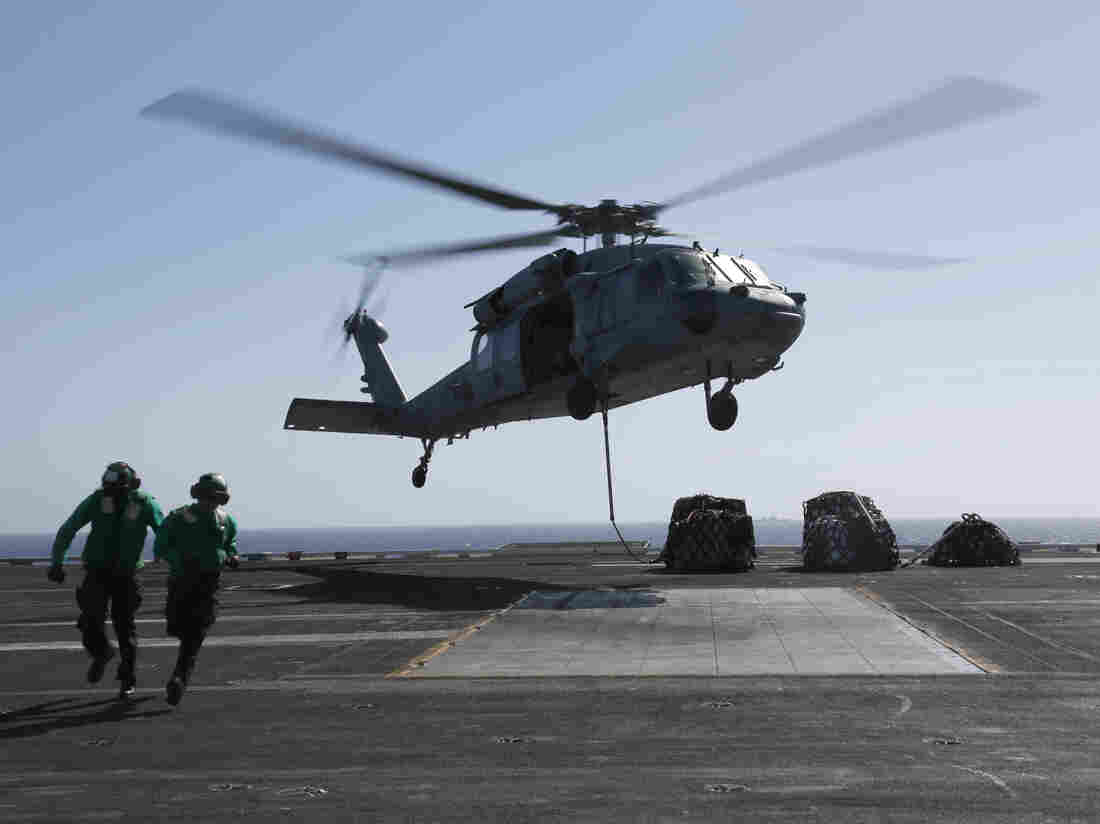1,000 More US Troops Deployed To The Middle East – NPR

A MH-60S Sea Hawk helicopter takes off from the aircraft carrier USS Abraham Lincoln in the Red Sea. The Abraham Lincoln Carrier Strike Group was recently deployed to U.S. Central Command area of responsibility as tensions between the U.S. and Iran escalate. On Monday, the State Department ordered additional troops to the Middle East.
Handout/U.S. Navy via Getty Images
hide caption
toggle caption
Handout/U.S. Navy via Getty Images
A MH-60S Sea Hawk helicopter takes off from the aircraft carrier USS Abraham Lincoln in the Red Sea. The Abraham Lincoln Carrier Strike Group was recently deployed to U.S. Central Command area of responsibility as tensions between the U.S. and Iran escalate. On Monday, the State Department ordered additional troops to the Middle East.
Handout/U.S. Navy via Getty Images
The Defense Department announced it is deploying 1,000 more U.S. troops to the Middle East “for defensive purposes” amid growing tensions with Iran.
Acting U.S. Defense Secretary Patrick Shanahan said Monday in a statement that the action, meant to address air, naval, and ground-based threats, comes after “a request from the U.S. Central Command (CENTCOM) for additional forces.”
The Trump administration has blamed Iran for a series of attacks on oil tankers in the Gulf of Oman.
“The recent Iranian attacks validate the reliable, credible intelligence we have received on hostile behavior by Iranian forces and their proxy groups that threaten United States personnel and interests across the region,” Shanahan said.
The statement did not mention the type of personnel being deployed. Officials told NPR that the troops are primarily intelligence, reconnaissance and surveillance (ISR); force protection and engineers.
The announcement is the latest in a series of deployments of additional forces to the Gulf region as the U.S. continues to accuse Iran of attacks on commercial shipping and threats to U.S. troops and interests. The deployments began last month when the U.S. sent an aircraft carrier strike group to the region along with Patriot missile batteries and several thousand troops whose mission is defensive in nature.
“The United States does not seek conflict with Iran,” Shanahan said. “The action today is being taken to ensure the safety and welfare of our military personnel working throughout the region and to protect our national interests. We will continue to monitor the situation diligently and make adjustments to force levels as necessary given intelligence reporting and credible threats.”
The Trump administration has been trying to convince some U.S. allies, primarily Germany and Japan, that Iran is responsible for the alleged attacks on the Gulf oil tankers. The Pentagon has released new photos designed to back up its claims.
Earlier Monday, Iran threatened to exceed limits on uranium stockpiles set by the 2015 Joint Comprehensive Plan of Action , an international agreement that sought to curb that country’s nuclear ambitions in exchange for an easing of sanctions.
President Trump withdrew the U.S. from that deal. Now the Iranians hope to pressure European countries to bypass U.S. sanctions.
“There is still time for the European countries, but if they want more time it means that they either can’t or don’t want to honor their obligations” under the international nuclear deal, spokesman Behrouz Kamalvandi told reporters gathered at Iran’s Arak heavy-water reactor, according to The Washington Post.
State Department spokeswoman Morgan Ortagus called the Iranian announcement “extortion” and accused the Iranian leadership of mounting a “challenge to international norms.”
But in criticizing the Iranians, the Trump administration is in the uneasy position of insisting that the Iranians abide by an international accord that the president already has condemned.



